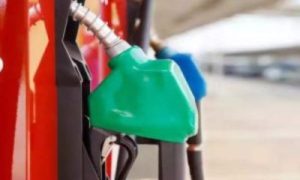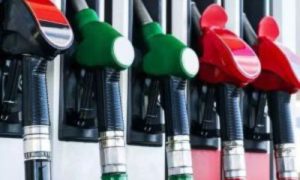DG Fuels, BP and Johnson Matthey Team Up to Produce Sustainable Aviation Fuel From Sugar Cane

Waste biomass made from sugar cane is set to power the next generation of sustainable aviation fuels, with a new $4 billion plant scheduled to be built in the farmlands of Louisiana.
Renewable hydrogen producer DG Fuels, energy giant BP and chemicals maker
Johnson Matthey plan to produce 180 million gallons of sustainable aviation fuel, or SAF, a year in St. James Parish, Louisiana—enough for 30,000 trans-Atlantic flights annually, they said.
Washington-based DG Fuels said it will be purchasing $120 million worth of sugar cane waste a year to produce carbon monoxide—one of the key components in the production of the group’s SAF. That gas will be combined with blue hydrogen to create a mixture called syngas, which can then be used to make a form of low-carbon kerosene through Johnson Matthey and BP’s proprietary technology, known as Fischer Tropsch CANS.
By switching to waste biomass and blue hydrogen, DG Fuels said its SAF produces 14 grams of CO2 per megajoule of energy when used, down from roughly 90 grams with ordinary kerosene.
Aviation accounts for just under 3% of global carbon emissions. As commercial jets are hard to electrify, the industry is looking at greener fuel sources to decarbonize. Just over 600 million liters of SAF were produced in 2023, representing a minuscule 0.2% of global jet-fuel use, according to the International Air Transport Association. To meet net zero, some 449 billion metric tons of SAF are going to be needed by 2050, the trade association said.
Most major western airlines do have supply offtake agreements, trialing new technologies which produce some form of low-carbon kerosene. DG Fuels, for example, has secured offtake agreements with
Delta Air Lines and
Air France-KLM, and has a strategic partnership with
Airbus to scale up the use of SAF globally.
Several large-scale SAF plants are also set to be built over the next few years, globally. Oil refiner
Phillips 66, for example, is hoping to start producing SAF using used cooking oils this year, aiming for 800 million gallons of fuel a year from a site in California.
London-based Johnson Matthey, which has historically produced chemicals and catalysts, pivoted into hydrogen in recent years, and sees SAF as one of its long-term strategies to cash in on green demand. “It’s hard to decarbonize all the airplanes that are flying around, so you need to look at the fuel. It’s a no brainer,” said Maurits van Tol, chief executive of the catalyst technologies unit at Johnson Matthey.
Christopher Chaput, president of DG Fuels, said that part of the company’s strategy has been building at scale and using low cost feedstocks to ensure prices offered to airlines can be competitive. “If you can offer a good price to airlines then even the village idiot can sell SAF. A year ago we had already sold 125 million gallons a year on long term contracts,” he said.
Chaput added that the SAF produced will be sold at a premium to ordinary kerosene, based on prices sold at Los Angeles airport.
The Louisiana plant is set to start production in 2028, with Johnson Matthey having trialed the technology at a pilot plant in the U.K. DG Fuels is looking to build a further 10 SAF sites in the U.S., largely in Maine and the Midwest due to higher availability of agricultural feedstocks like sugar cane waste.
Source Link : https://www.wsj.com/articles/big-hitters-team-up-to-produce-sustainable-aviation-fuel-out-of-sugar-cane-a57abcd8
















